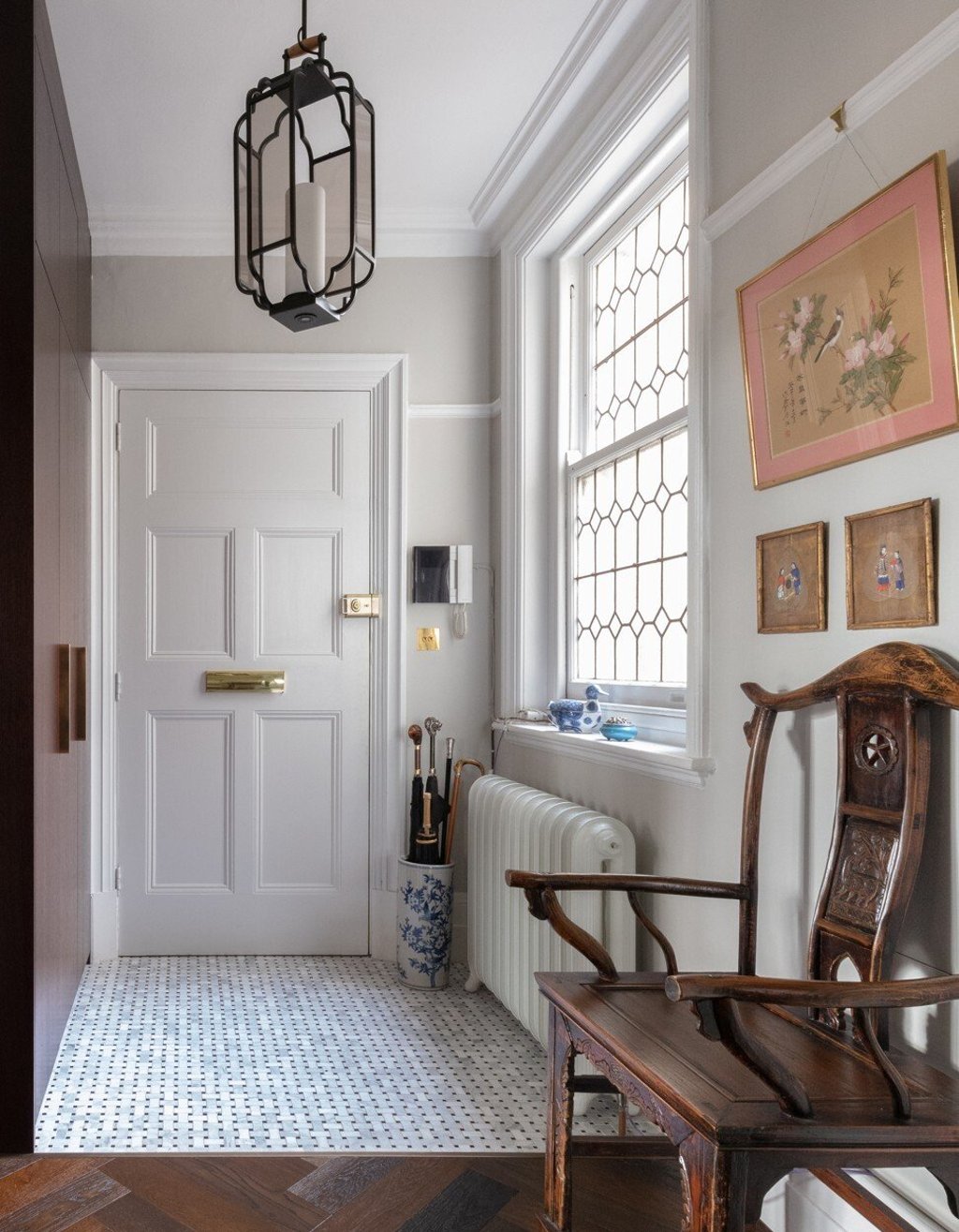How British architects Holloway Li remodelled a listed Westminster flat to marry an Edwardian art nouveau exterior with Qing dynasty interiors

Respecting both the Confucian ideal of form and matter existing interdependently, and the heritage of the Grade II-Listed building, the architects divided rooms with rosewood screens to preserve privacy without undue formality, added bespoke furnishings to fit the spaces and provided room to display the client’s art collection
When a Chinese calligrapher and art collector recently bought a historic, 1,500-square-foot (140-square-metre) flat to serve as his London address, it was with the aim of creating a home that was “English outside and Chinese inside”, recalls the owner (who wishes to remain anonymous).
Judging by the final product, he’s done just that, with this corner flat in a six-storey art nouveau Westminster building dating to 1907. “I [wanted] to bring my culture to my home in the UK, just as, similarly, a century ago Europeans brought a piece of their own culture to their homes in China.”
Marrying Edwardian architecture with Qing dynasty interiors, interior architecture studio Holloway Li followed its client’s lead and incorporated elements of Chinese and English history, philosophy and politics for a comfortable, welcoming home that reflects traditional Chinese culture and thoughtfully curates its art pieces.
We wouldn’t design in this way for somebody who didn’t have a connection to these elements – who had never been to or been influenced by China. This, we would consider to be appropriation

The East-meets-West aesthetic was nothing new to Holloway Li’s China-born co-founder Na Li. “My personal approach to design and architecture has always originated from an interest in merging the East with the West, adopting modern techniques whilst expressing traditional meanings and philosophies,” she begins. So when she and partner Alex Holloway met their client, there was an instant and mutual understanding about capturing the two cultures in the design.
On a more prosaic front, the process began with an immersive trip to China, signalling the beginning of a steep learning curve for both. An awareness of the Chinoiserie so common in Edwardian design alongside the recognition of European influences found in the Forbidden City (Li cites the trompe l’oeil technique in the Palace of Tranquil Longevity’s Juan Qin room) were proof positive that design was fluid and independent of geography – to a degree.
“Design can be global and universal from a trend perspective but each design, especially residential design, should be unique and tailored to its context and individuals,” Li argues. The unique Eastern philosophies demanding representation within a Western structure are what make the flat so memorable.

Realising the design’s distinct cultural elements was a challenge in a Grade II-listed building subject to a stringent Listed Building Consent process. “Due to the limitation of rearranging the layout, we had to keep the kitchen to the rear end of the apartment, and have separate shower and wash rooms for the guest rooms,” explains Li. Air conditioning couldn’t be added, and the original windows had to be retained.
But the rules resulted in a functional, cross-cultural space with contemporary conveniences that never tips over into kitschy Chinoiserie. “We wouldn’t design in this way for somebody who didn’t have a connection to these elements – who had never been to or been influenced by China. This, we would consider to be appropriation,” says Holloway. “The Chinese elements that have been designed or adopted in this project are not direct replicas but reimagined interpretations that fit within the space and this context.”